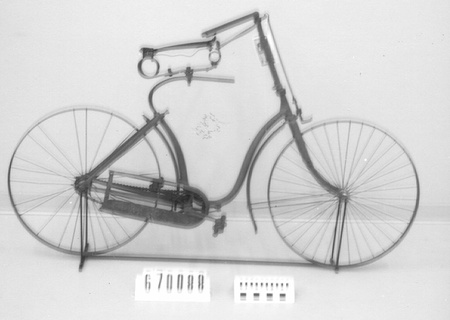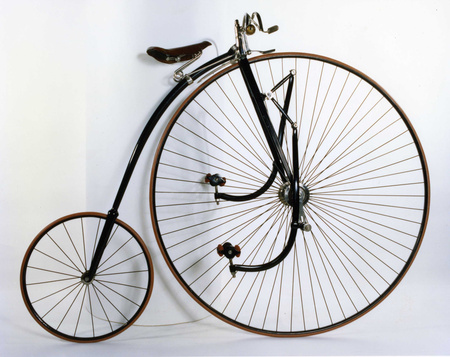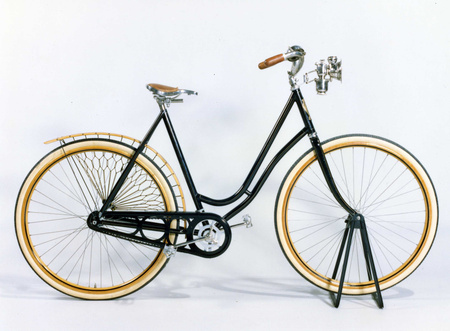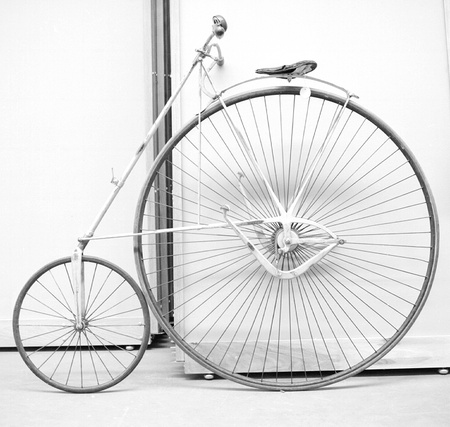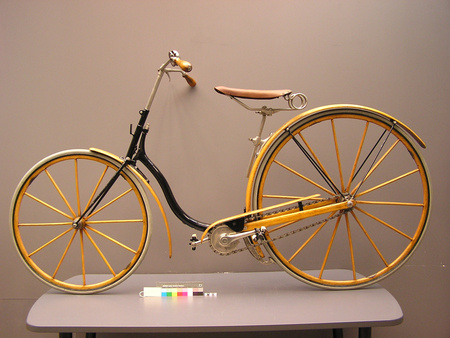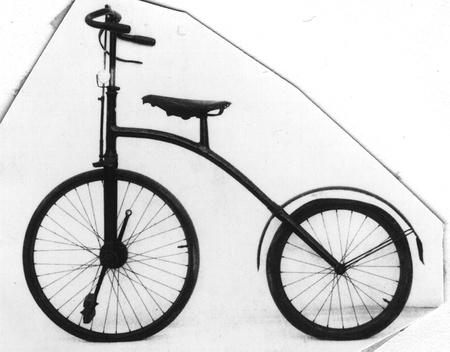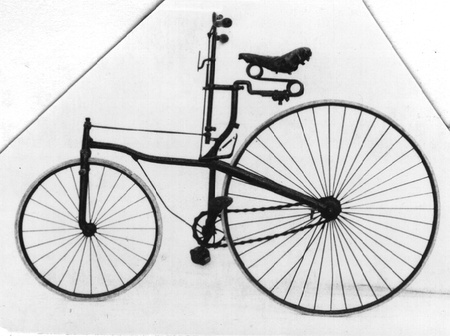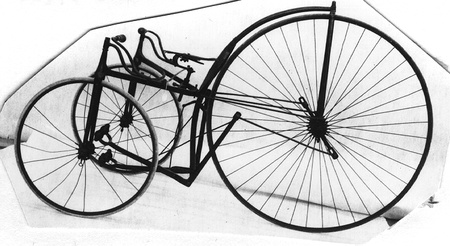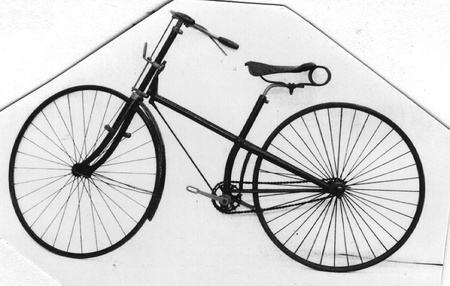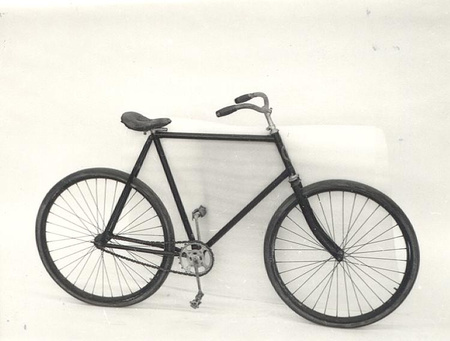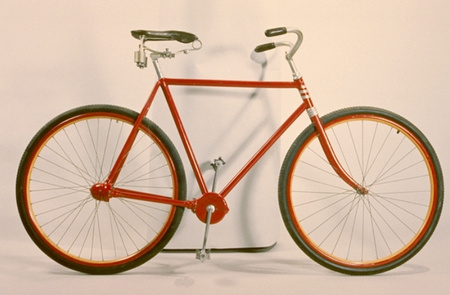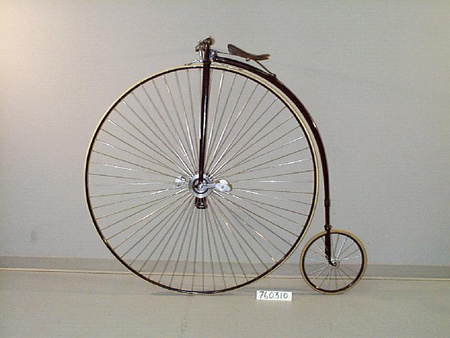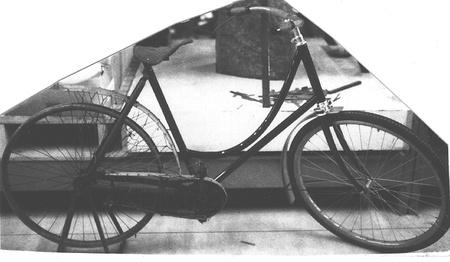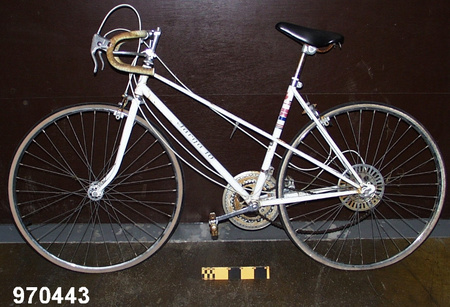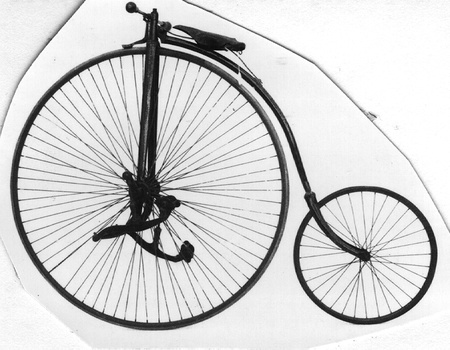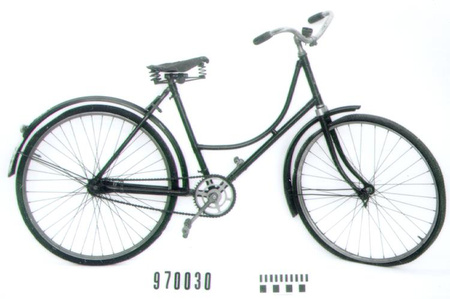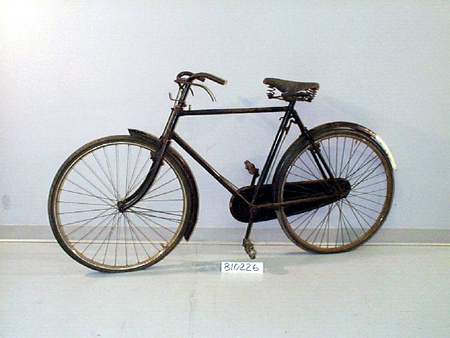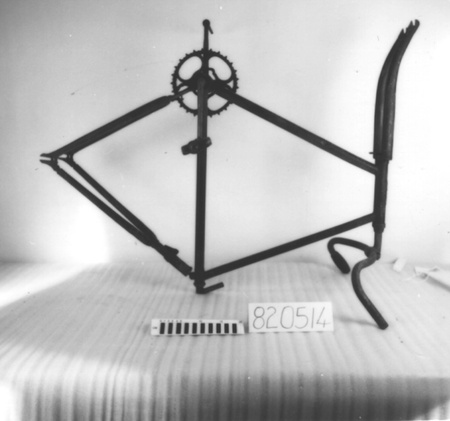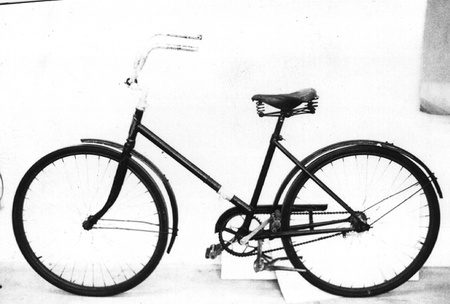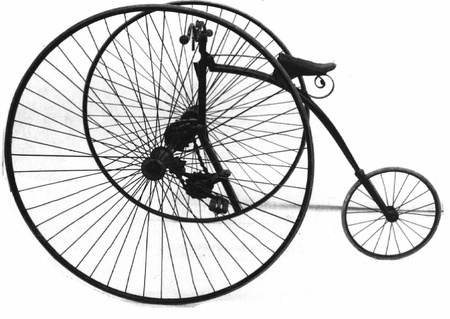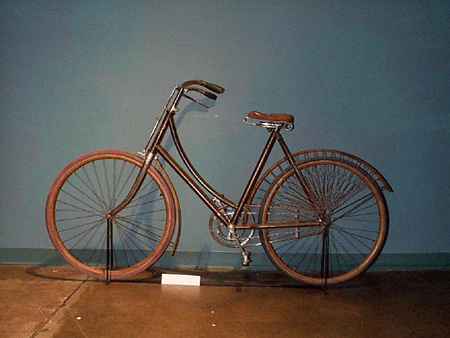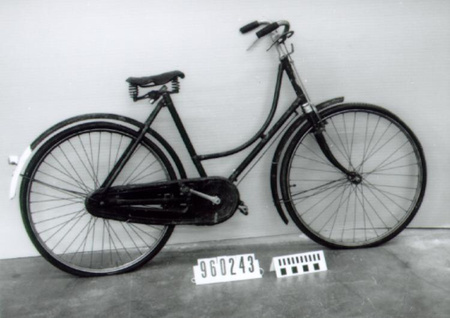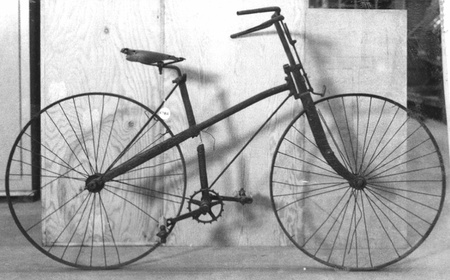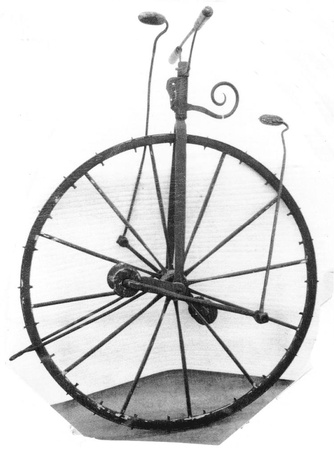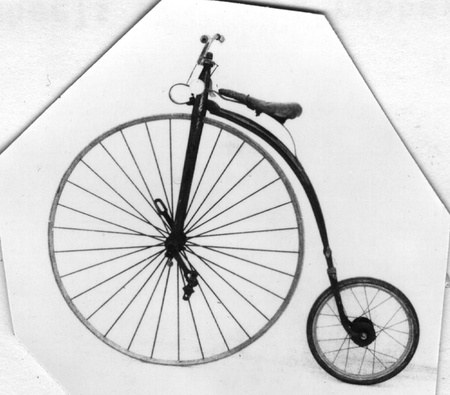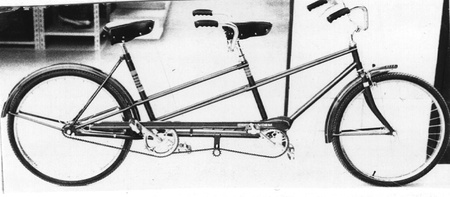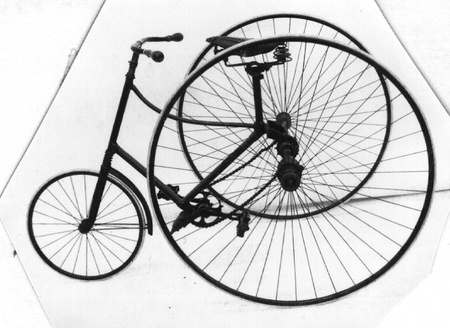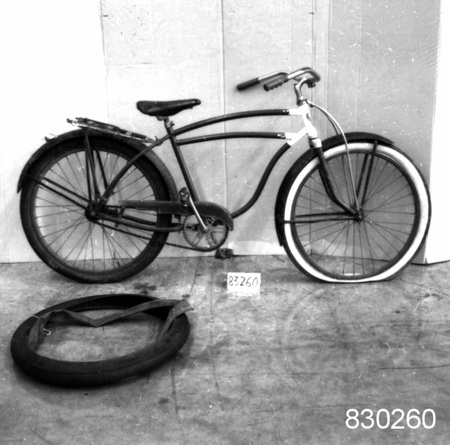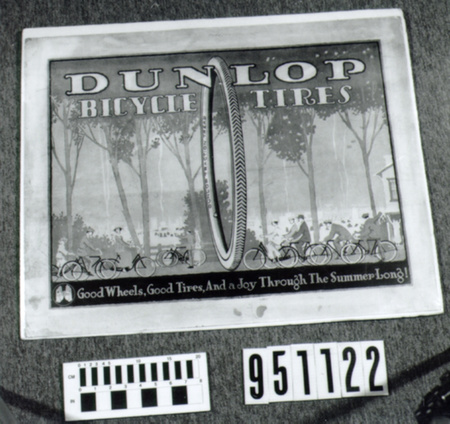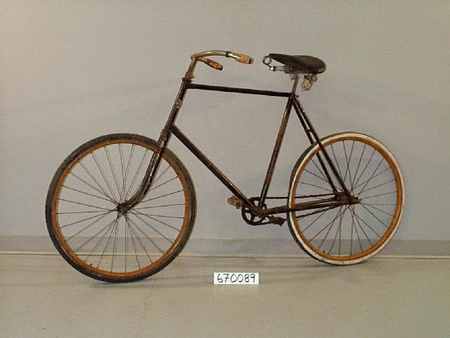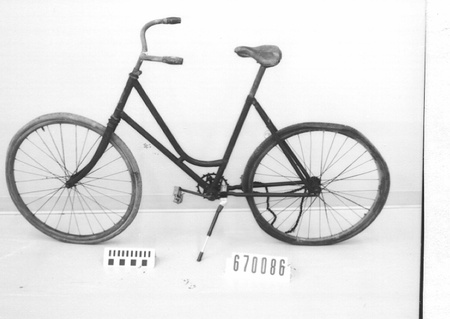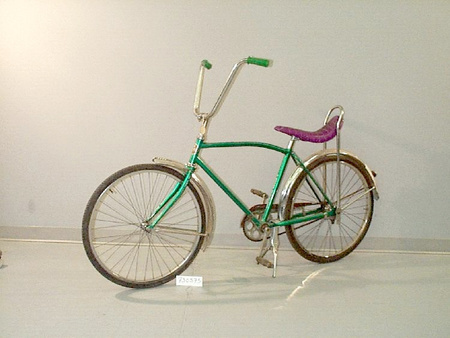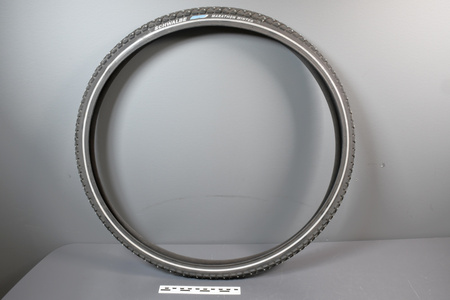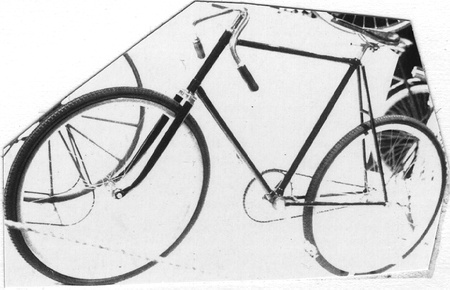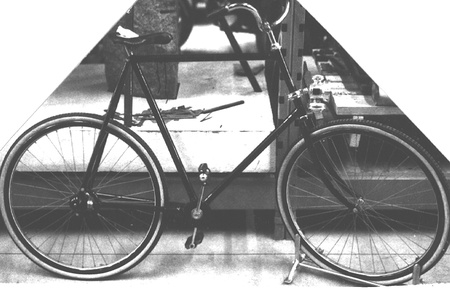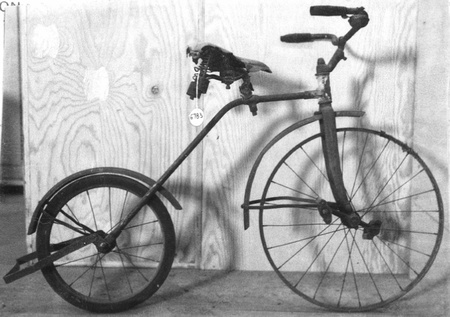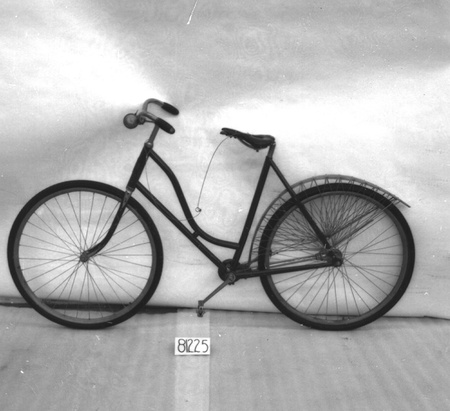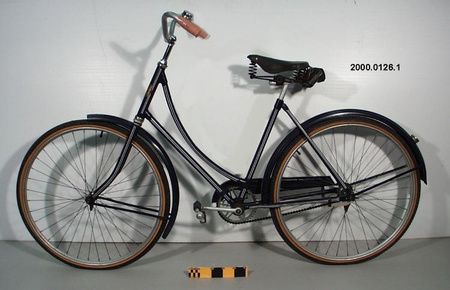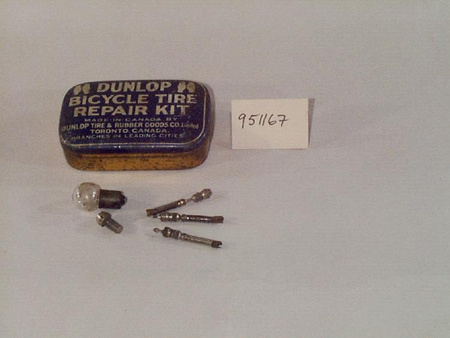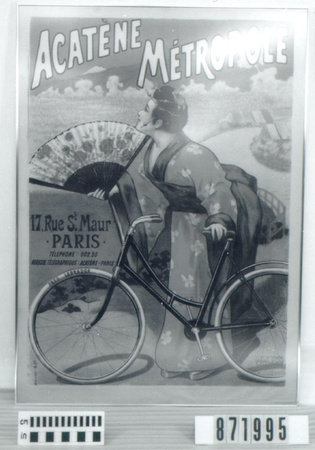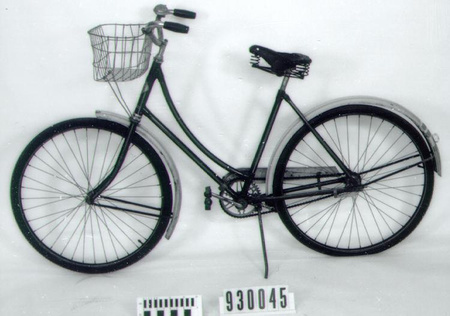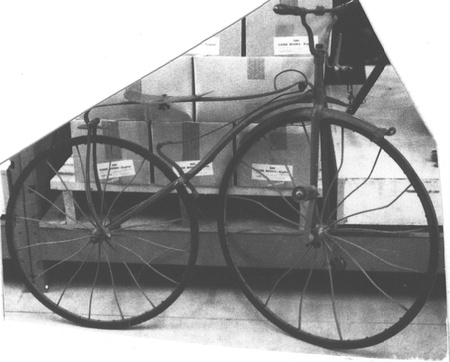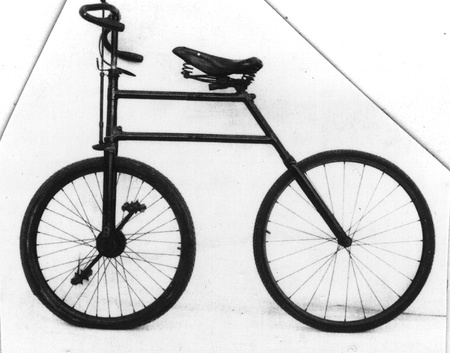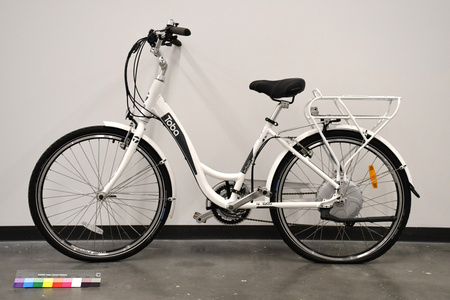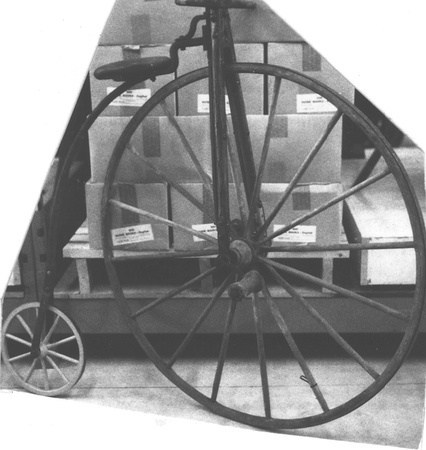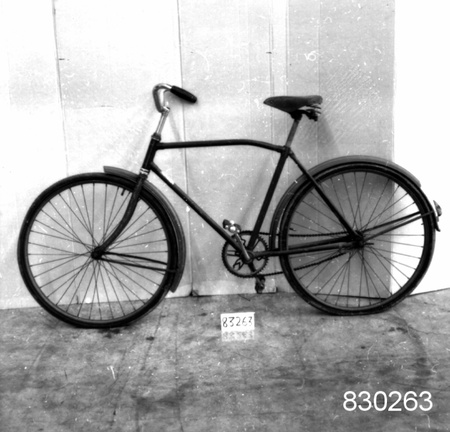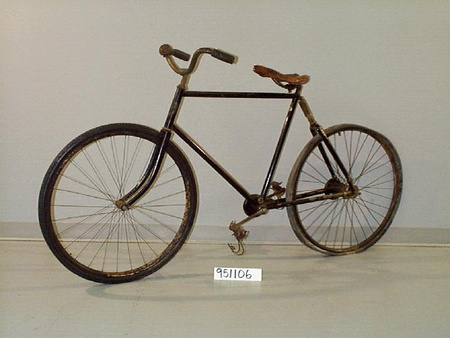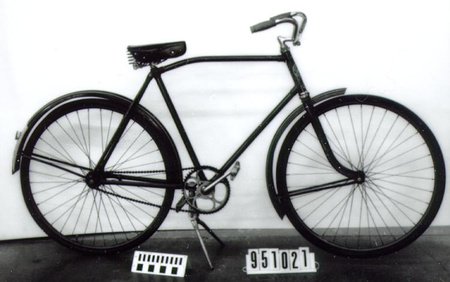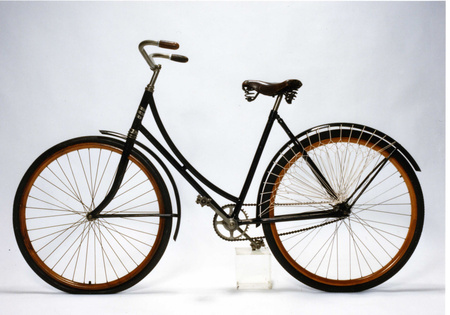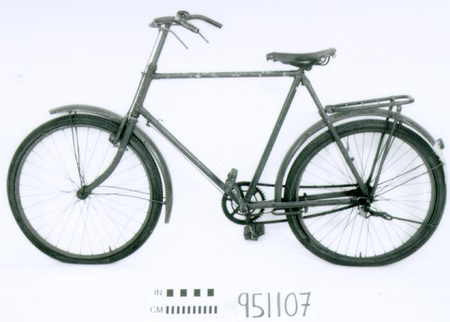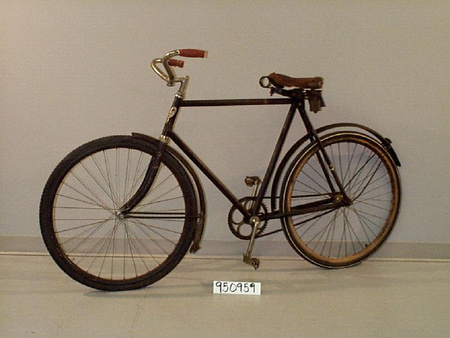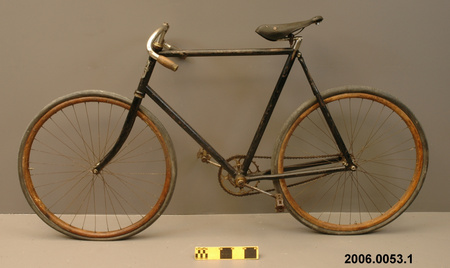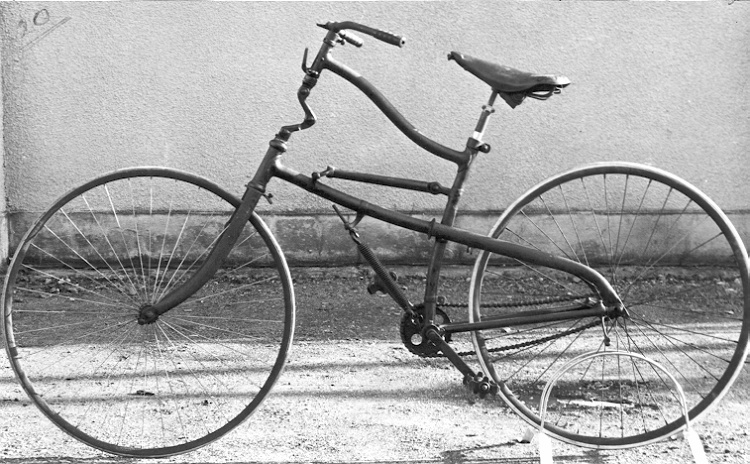Bicycle
Use this image
Can I reuse this image without permission? Yes
Object images on the Ingenium Collection’s portal have the following Creative Commons license:
Copyright Ingenium / CC BY-NC-ND (Attribution-NonCommercial 4.0 International (CC BY-NC 4.0)
ATTRIBUTE THIS IMAGE
Ingenium,
1981.0220.001
Permalink:
Ingenium is releasing this image under the Creative Commons licensing framework, and encourages downloading and reuse for non-commercial purposes. Please acknowledge Ingenium and cite the artifact number.
DOWNLOAD IMAGEPURCHASE THIS IMAGE
This image is free for non-commercial use.
For commercial use, please consult our Reproduction Fees and contact us to purchase the image.
- OBJECT TYPE
- safety/chain drive/spring frame
- DATE
- 1888
- ARTIFACT NUMBER
- 1981.0220.001
- MANUFACTURER
- Linley & Biggs
- MODEL
- Whippet
- LOCATION
- London, England
More Information
General Information
- Serial #
- N/A
- Part Number
- 1
- Total Parts
- 1
- AKA
- N/A
- Patents
- N/A
- General Description
- METAL FRAME/ METAL WHEELS W. SOLID RUBBER TIRES/ WOOD HANDGRIPS W. BRASS FERRULES/ RUBBER PADS ON PEDALS & FOOTRESTS
Dimensions
Note: These reflect the general size for storage and are not necessarily representative of the object's true dimensions.
- Length
- 190.0 cm
- Width
- N/A
- Height
- 111.0 cm
- Thickness
- N/A
- Weight
- N/A
- Diameter
- N/A
- Volume
- N/A
Lexicon
- Group
- Non-motorized Ground Transportation
- Category
- Cycles & cycling
- Sub-Category
- N/A
Manufacturer
- AKA
- Linley Biggs
- Country
- England
- State/Province
- Unknown
- City
- London
Context
- Country
- Unknown
- State/Province
- Unknown
- Period
- Unknown
- Canada
-
Safety bicycles made their way to North America in the mid-to-late 1880s, and instantly became a success. Women contributed to the wider acceptance of the safety bicycle and began using the bicycle as a means of asserting their independence and redefining their gender identity. The Canadian world was still strictly adhering to Victorian values. Therefore, women used the bicycle as a way of reasserting their freedom of movement and travel. In 1888, Mrs. Harriette H. Mills of Washington D.C. formed the first women’s bicycling club in the United States, and further influenced the popularity of cycling amongst women throughout the continent. The number of bicycle users in Canada increased rapidly after 1890 as bicycles became safer to ride with the addition of pneumatic tires. They also became more affordable with the price of bicycles being halved between 1896 and 1900. Les bicycles de sécurités ont fait leurs débuts en Nord Amérique au milieu des années 1880s et les femmes ont grandement contribuées à la popularité de ce mode de transport. Les femmes utilisaient le bicycle pour redéfinir leurs indépendances et pour briser les anciennes valeurs victoriennes de genre. En 1888 Hariette H. Mills a bâti le tout premier club de cyclisme pour femmes à Washington et ceci a aussi augmenté la popularité de ce mode de transport au travers le continent.Le nombre d'utilisateurs des bicycles ont grandement augmenter au Canada en 1890 avec l'innovation des roues à pneumatique gonflables. Cette invention rendait le mode de transport plus sécuritaire et le prix des bicycles a graduellement diminué entre 1896 et 1900. - Function
-
A safety bicycle with suspension fitted to the frame that was used as a mode of transportation. Un bicycle de sécurité avec une suspension qui est adaptée sur un châssis pour être utilisé comme un mode de transport. - Technical
-
The Whippet bicycle of the mid 1880s had the whole section of the frame carrying the handlebars, the seat, and the crank sprung as a single unit. The springs were crafted in conjunction with the frame to reduce vibrations on the bicycle. The Whippet is one of the examples of bicycle designers’ goals during the mid 1880’s – the bicycle needed to become safer, more comfortable, and sturdier. The experimental and somewhat complicated diamond frame accomplished this. Most importantly, the Linley & Biggs Whippet was evidence of trial and error in the early safety era. Most importantly, designs such as the whippet show that pneumatic tires and the wheels are both the same size. This, combined with the advances in gears, meant that the safety bicycle could be faster than the ordinary bicycle while also being much safer to ride. Le bicycle Whippet avait une section de son châssis qui portait le banc, le guidon et les manivelles suspendues dans un morceau. Les ressorts étaient fabriqués en conjonction avec le châssis pour réduire les vibrations en utilisant le bicycle. Le Whippet est un exemple des conceptions des années 1880s qui misait sur la sécurité, le confort et la stabilité des bicycles comme mode de transport. Le châssis en forme de diamant permettait au bicycle d'accomplir ces innovations avec l'aide des pneu pneumatiques et des roues de grandeurs identiques. En comblant tout cela avec les avances technologiques des engrenages le bicycle de sécurité fabriquée par Linley et Biggs étaient plus rapides que le bicycle Ordinaire tout en offrant moins de risques en utilisation. - Area Notes
-
Unknown
Details
- Markings
- RECTANGULAR, COPPER, MFR'S PLATE ON HEAD TUBE 'L&B, WHIPPET, 1888'
- Missing
- COMPLETE EXCEPT FOR SADDLE LEATHER
- Finish
- PAINTED ENTIRELY BLACK/ DARK BROWN SADDLE/ HANDGRIPS STAINED DARK BROWN/ FERRULES UNPAINTED
- Decoration
- N/A
CITE THIS OBJECT
If you choose to share our information about this collection object, please cite:
Linley & Biggs, Bicycle, 1888, Artifact no. 1981.0220, Ingenium – Canada’s Museums of Science and Innovation, http://collection.ingenium.ca/en/id/1981.0220.001/
FEEDBACK
Submit a question or comment about this artifact.
More Like This

